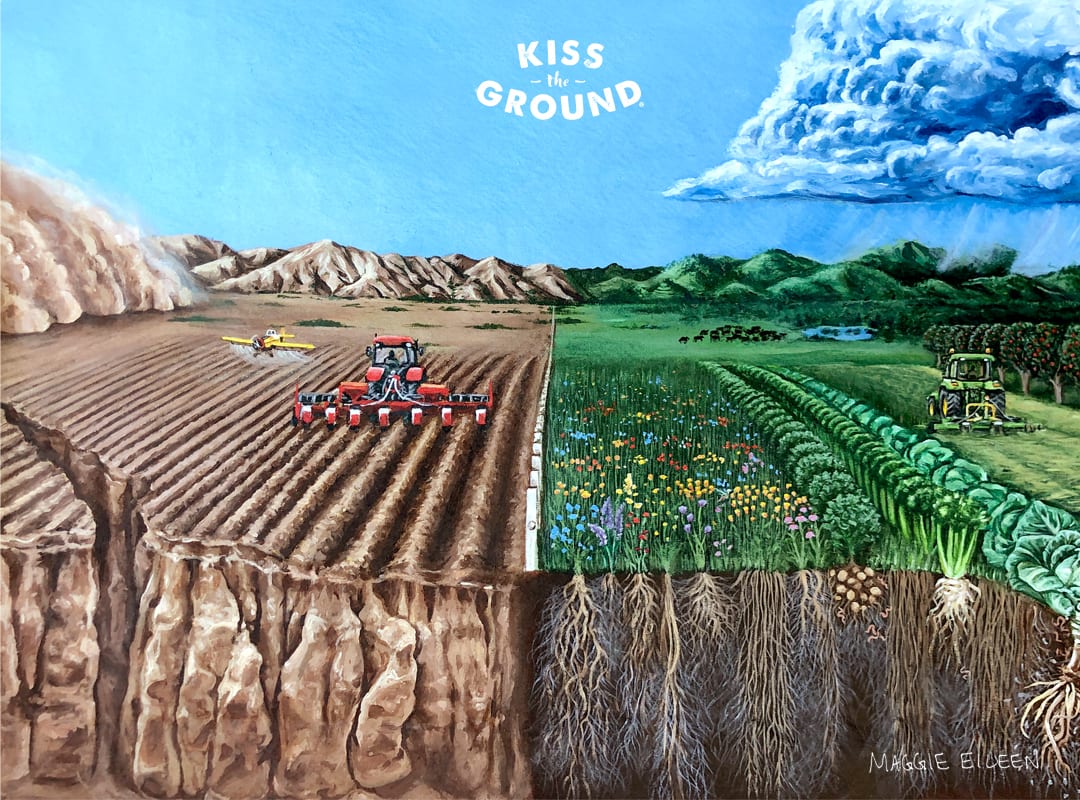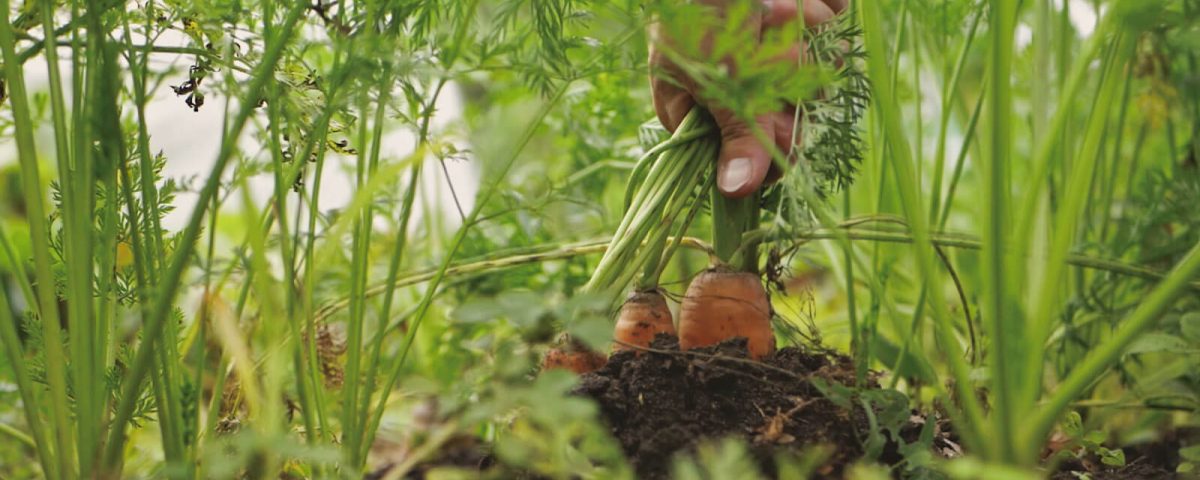Organic Food Logistics – How do organic food products travel across the globe?
May 10, 2021What is Rainforest Alliance?
June 14, 2023Reducing fossil fuel emissions is not enough to stop climate change. We need to change our farming techniques in order to balance the carbon cycle.
Kiss The Ground is a 2020 documentary film, directed by Josh and Rebecca Harrell Tickell, that proposes a new vision on what could be a long-term solution for climate change: bringing back the natural capacity of the soil to retain carbon and sustain life [1].
In the documentary, narrated by Woody Harrelson, the main concern is the current style of agriculture that supplies the market through aggressive tilling and excessive use of chemical fertilizers and pesticides. These farming practices have been damaging the soil for decades now by turning rich soil into dust that grows food with reduced nutritional value.
The film explains how modern practices have turned agriculture into a source of heat by killing the microorganisms in the soil through the use of pesticides, producing weak and isolated crops, and how the cycle of carbon cannot be properly completed anywhere this style of agriculture is used, making it a major cause of climate change.

In recent years, attention has been drawn to regenerative agriculture practices, combining different types of crops and focusing on soil health. Soil health is achieved by avoiding pesticides and excessive chemical fertilization. It means looking after the topsoil microorganisms in the same way intestinal flora is crucial to a healthy digestive system. The soil must not be tilled and always kept humid in order for beneficial microorganisms to flourish. These microorganisms are fundamental in they carbon cycle which transports the carbon from the atmosphere back to the earth.
Diversity of crops reduces the risk and proves more effective than a very large area of land with a single type of crop. A simple principle that has been forgotten in industrialized mono-culture widespread farming.
Regenerative agriculture increases the nutrimental value and the overall yield of a field, while improving carbon absorption by the soil and creating a thriving ecosystem that is powered by the microorganisms living in it.
In terms of reversing global warming, healthy soil has a higher capacity to sequester carbon and process it than the entire atmosphere and all of the plants on the planet, being able to retain up to 4,000 giga-tonnes of carbon.

Regenerative agriculture was first proposed by Robert Rodale in the early 1980s [3].
The French minister of agriculture, Stéphane Le Foll, along with the National Institute of Agricultural Research (INRA) -the world´s largest research institution on soil -, applied this idea into a public initiative in the 2015 United Nations Climate Change Conference, and it is called “4 per 1000” [4]. Through agroecology and agroforestry -as well as careful planning-, it aims to increase the carbon content of the world’s soils by 0.4% annually. This apparently small change would sequester the same amount of carbon that humanity emits each year. The introduction of this approach had great success and today more than one hundred countries have committed to implement this plan in the years to come. Unfortunately, the U.S., China, and India are some of the countries that have not yet signed this agreement.

If these measures are adopted by most of the population, it is expected that we could see a rapid decay in greenhouse gasses present in the atmosphere, and experts assure that the planet could begin to cool down to more comfortable temperatures in about 15 to 20 years.
This kind of regenerative agriculture can also be combined with livestock farming (cattle, hogs, and chickens), as animal grazing benefits the soil by continuing the cycle of carbon and nutrients from the animals down to the soil. This can all be achieved by careful planning, and by creating a sustainable system in which farmers take care of the soil by not tilling it and controlling the amount of time the livestock spends on a specific land surface.
With this regenerative method, topsoil can remain unharmed and provide us with high quality produce all year round, improving value to the consumer and benefit to the farmer. Every year, more and more farmers are turning into regenerative agriculture, and it is expected that more of them will do it every year.

References
[1] Tickell, J., & Tickell, R. H. (Directors). (2020). Kiss the Ground [Film]. The Redford Center, Big Picture Ranch, Benenson Productions. Available on Netflix.
[2] Kayler, Z., Janowiak, M., & Swanston, C. (n.d.). Global carbon. U.S. Forest Service. Retrieved from https://www.fs.usda.gov/ccrc/topics/global-carbon
[3] U.S. Department of Agriculture. (n.d.). Alternative Farming Systems Information Center’s history timeline. Retrieved from https://www.nal.usda.gov/afsic/afsic-history-timeline
[4] International “4 per 1000” Initiative. (n.d.). Soils for food security and climate. Retrieved from https://4p1000.org/?lang=en


